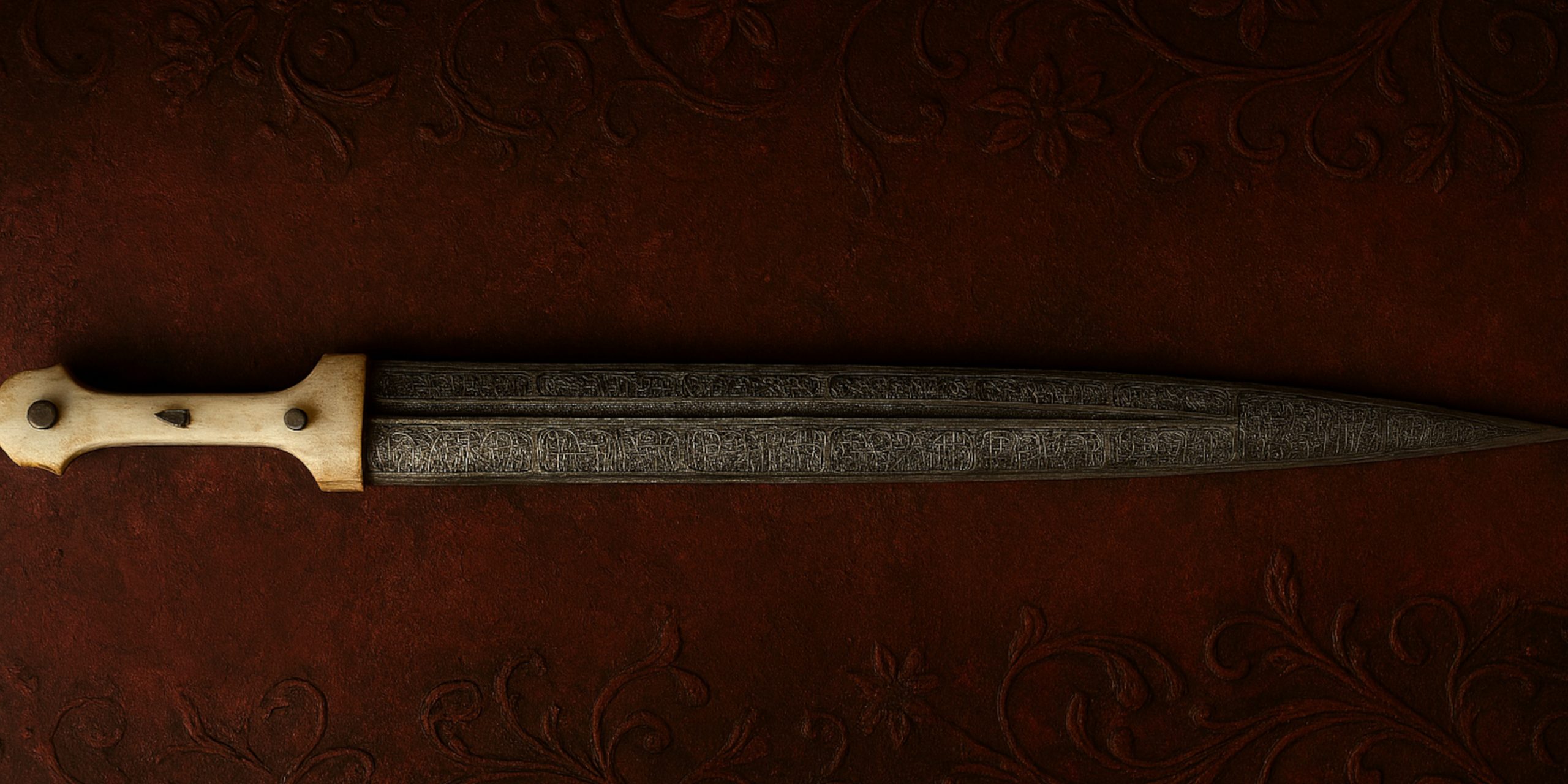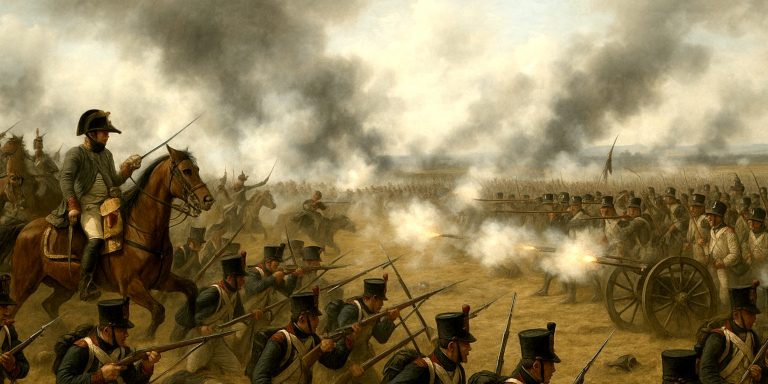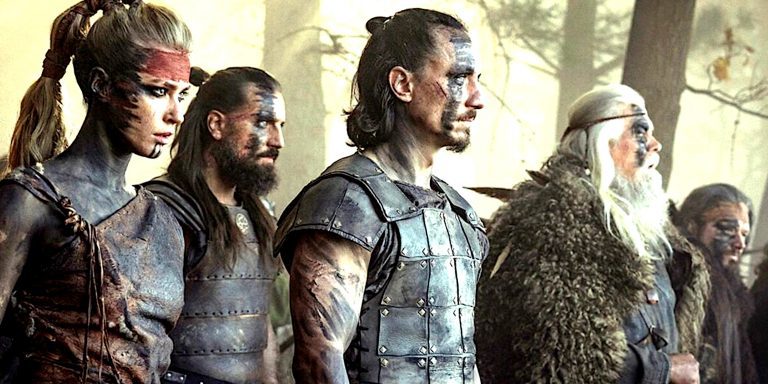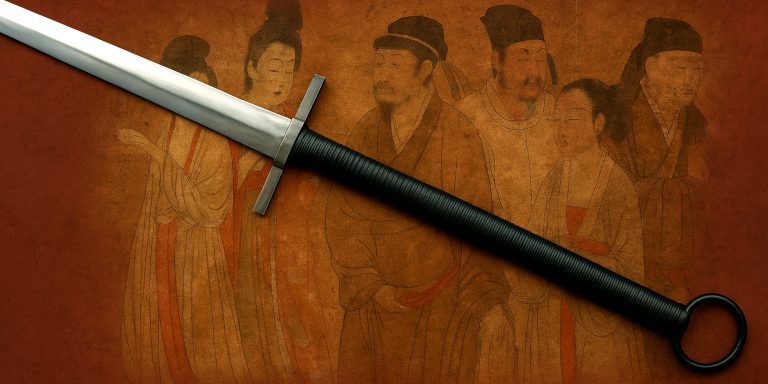
The Qama is a traditional double-edged short sword or long dagger primarily associated with the peoples of the Caucasus region, particularly the Georgians, Circassians, and Chechens. It is often described as a close-combat weapon that blends the characteristics of a dagger and a short sword. The design is functional and austere, built for thrusting and capable of delivering slashing cuts in confined spaces. Despite its modest size, the Qama held both martial and cultural importance across centuries.
Specification
| Feature | Detail |
|---|---|
| Blade type | Double-edged, straight, leaf or tapering profile |
| Blade length | Typically 30 to 50 cm |
| Total length | 40 to 60 cm |
| Blade material | Traditionally high-carbon steel |
| Hilt type | No guard, flared or straight grip |
| Grip material | Wood, horn, or silver inlays |
| Sheath | Wood with leather or metal fittings |
| Weight | Approximately 500 to 800 grams |
| Balance | Centre-weighted for precise thrusts |
History and Evolution
The Qama likely emerged by the 18th century, influenced by earlier Greek, Scythian, and Persian short swords. It was well suited to the mountainous terrain and close-quarter skirmishes typical of the Caucasus. Warriors carried the Qama vertically at the waist, making it easy to draw quickly in sudden confrontations.
By the 19th century, it had become a symbol of cultural identity, particularly among Cossacks, who adopted it as a standard sidearm. Variants appeared across regions, each with slight differences in decoration, size, and blade profile.
During the Tsarist and early Soviet periods, the Qama persisted in both military and ceremonial roles, although industrial production gradually replaced traditional blacksmithing.
Advantages and Disadvantages
Advantages:
- Compact and manoeuvrable: Ideal for close quarters and indoor combat.
- Efficient thrusting design: The double-edged, straight blade is optimised for penetrating strikes.
- Culturally versatile: Suitable for both combat and ceremonial presentation.
- Quick to draw: Worn centrally for ease of access.
Disadvantages:
- Limited reach: Ineffective against longer weapons in open combat.
- No guard: Offers little protection for the hand.
- Blunt force vulnerability: Less effective when facing armoured opponents.
- Not suited for wide slashes: The narrow blade lacks curvature or weight for chopping motions.
Comparison with Similar Weapons
| Weapon | Similarities | Differences |
|---|---|---|
| Roman Gladius | Both short, double-edged, thrusting tools | Gladius is broader and designed for formation combat |
| Scottish Dirk | Both serve as sidearms with ceremonial value | Dirk is single-edged and usually longer |
| Kindjal | Near-identical in form and use | Kindjal is often considered a subtype or cousin of the Qama |
| Seax | Both used in tribal/militia cultures | Seax has a single edge and is more utility-focused |
Legacy
The Qama continues to appear in ceremonial dress among Caucasian and Cossack communities. It is also a recurring object in Russian and Georgian martial culture and folk dances. Museums across the former Russian Empire and the Caucasus showcase the Qama as an emblem of local heritage.
Modern martial arts schools that preserve Caucasian fighting traditions often include Qama techniques, focusing on speed, reaction, and thrust precision.
Where to See
- State Historical Museum, Moscow – Houses several 19th-century Qamas used by Cossack regiments.
- Georgian National Museum, Tbilisi – Features early examples with ornate hilts and regional variations.
- Kunsthistorisches Museum, Vienna – Displays Caucasian weapons from 18th and 19th centuries.
- British Museum, London – Has a small collection of Qamas in its ethnographic arms section.
Collectors Guide and Auction Prices
Key Features for Collectors:
- Blade quality: Pattern-welded or inscribed blades are highly prized.
- Hilt decoration: Silver, niello, or enamel inlays significantly increase value.
- Provenance: Cossack or documented Caucasian origin adds historical weight.
- Condition: Original scabbards and minimal corrosion are preferred.
Recent Auction Prices:
| Item Description | Sale Price (GBP) |
|---|---|
| 19th-century Georgian Qama with silver niello hilt | £2,100 |
| Cossack Qama with Damascus steel blade and inscription | £1,750 |
| Simple 20th-century Soviet military Qama | £300 |
| Museum-quality 18th-century Circassian Qama | £3,500 |
Collectors should be cautious of modern replicas, many of which lack historical forging techniques and are often misrepresented.
Summary
The Qama, while modest in size, commands respect for its deadly efficiency and deep cultural roots. It remains a symbol of identity and martial discipline, bridging the gap between knife and sword. Whether studied, collected, or displayed, the Qama carries the weight of centuries of frontier conflict and craftsmanship.



